The Friends envision a healthy and vibrant Cascade-Siskiyou National Monument for present and future generations. We manifest this vision by supporting students in their path towards careers in the sciences and arts that contribute to conservation efforts. In just three years, the Friends Research Grant has become one of our standout programs: awarding individual grants ranging from $250-$1,500 to undergraduate and graduate students that enhance the understanding, appreciation, preservation, and protection of the CSNM.
On March 23, over sixty Friends’ supporters and scientists gathered to hear about the research by four students and scientists who have endeavored research in the Monument boundaries in 2016. It was an opportunity for students to present their research in a professional context and for the rest of us to learn about the current status of critical species and landscapes in the CSNM.
L to R: Martin Harris and Kieran McCann (University of Oregon, BS Earth Sciences), Charles Schelz (BLM Ecologist), and Emily Burke (Southern Oregon University, Environmental Education) K Boehnlein photo
Martin Harris (University of Oregon, BS Earth Sciences), Kieran McCann (University of Oregon, BS Earth Sciences), and Kendra Madaras-Kelly (Southern Oregon University, BS Chemistry) all worked with Emeritus Professor Jad D’Allura on geoscience projects. Martin furthered existing GIS mapping data for the High Cascades and Western Cascades regions of the Parker Mountain region, noting the differences in rock type between each formation. Kieran focused on hydrology, attempting to answer the question, “How does geology affect stream flow?” He found that the High Cascades, being more porous, allow water to flow into groundwater more readily (see Kieran's photos). Consequently, the High Cascades retain less water throughout the season, whereas streams in the Western Cascades (more eroded and protected) retain more surface water. Kendra is the first researcher to attempt water chemistry analysis in Monument waterways, analyzing eleven water samples from various locations for presence of trace elements. Luckily, she found that the eight creeks are all safe to drink from, and she discovered that the concentration of elements increased as the stream length increased, most likely due to influx from various tributaries.
Emily Burke (Southern Oregon University, MS Environmental Education) presented information about her Master’s Thesis project on Great Grey Owl (GGO) and Barred Owl (BO) competition on the Dead Indian Plateau (See Emily's photos) . Emily’s research furthers existing widespread research on competition between native Northern Spotted Owls and invasive Barred Owls. Her project attempted to parce out the differences between GGO and BO habitat and pinpoint the main variables that define each species’ individual habitats. Her findings suggest that the habitats of GGO (less dense forests) and BO (dense, shorter forests) are different enough that they don’t seem to be posing much of a threat to competition. This is great news for the Monument, as a majority of the GGO nests discovered by the BLM in the last five years are in the expanded Monument area. Emily’s research suggests that conserving Great Grey Owl habitat into the future, especially with increased Monument acreage, may be a low concern.
Chris Volpe talks about the current status of the Jenny Creek sucker. K Boehnlein photo
Chris Volpe (BLM fish biologist) and Scot Loring (mycologist and Friends’ board member) also offered insights into recent studies on the Monument. Chris summarized Jenny Creek sucker surveys from 1981 to the present, reassuring us that research is still active on behalf of this special species. Biologists like Chris continue to monitor and locate priority spawning sites, paying particular attention to tagged individuals’ tendency to return to their birth streams to spawn. Scot summarized the 2016 Fungi BioBlitz findings, highlighting six rare or sensitive species that were found among the total 114 species catalogued. Out of this total, 99 new species were also recorded for the CSNM lists, increasing the total number of fungi species documented within Monument boundaries from 47 to 146!
Michael Parker (SOU Biology Chair, aquatic ecologist, and herpetologist) closed the evening’s event with poignant comments about future research opportunities in the Monument. He reminded us that the Friends Research Grant was born over three years ago at the end of a hike that he led in the Monument for Friends’ supporters. At the conclusion of the hike, participants wondered about more opportunities for research in the Monument, and offered bills or checks for the creation of a fund for students.
Today, we have an expanded Monument just out our backdoor, and a myriad of potential research opportunities. We know that biodiversity is abundant in the CSNM and that connectivity between habitats is necessary for species to thrive, but little is known about the social & cultural aspects of the Monument. For instance, what are the recreational and economic implications of the CSNM to neighboring communities? Or, why are national monuments important for our aesthetic, spiritual, and educational well-being? The answers to these questions, and more, are endless. Here’s to another successful year for students and career scientists attempting to answer the most creative questions they can muster!
Katie Boehnlein, Coordinator
Friends of Cascade-Siskiyou National Monument


